Abstract
Purpose
Materials and methods
Results
REFERENCES
Fig. 2.
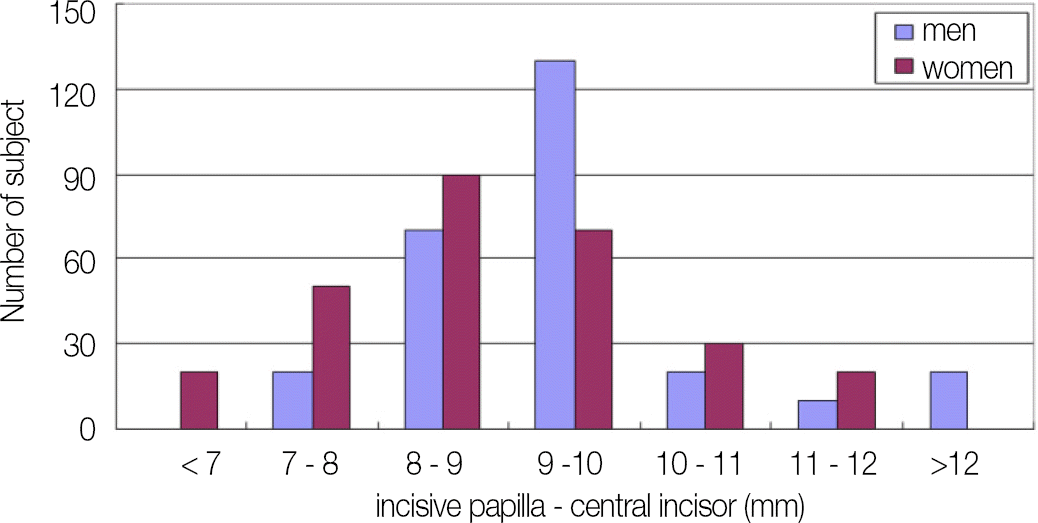
Fig. 3.
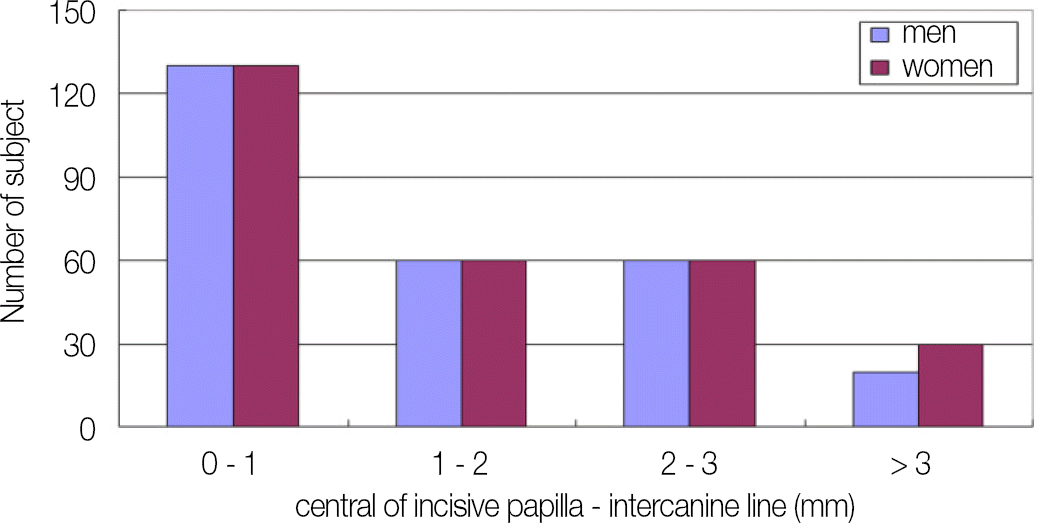
Fig. 4.
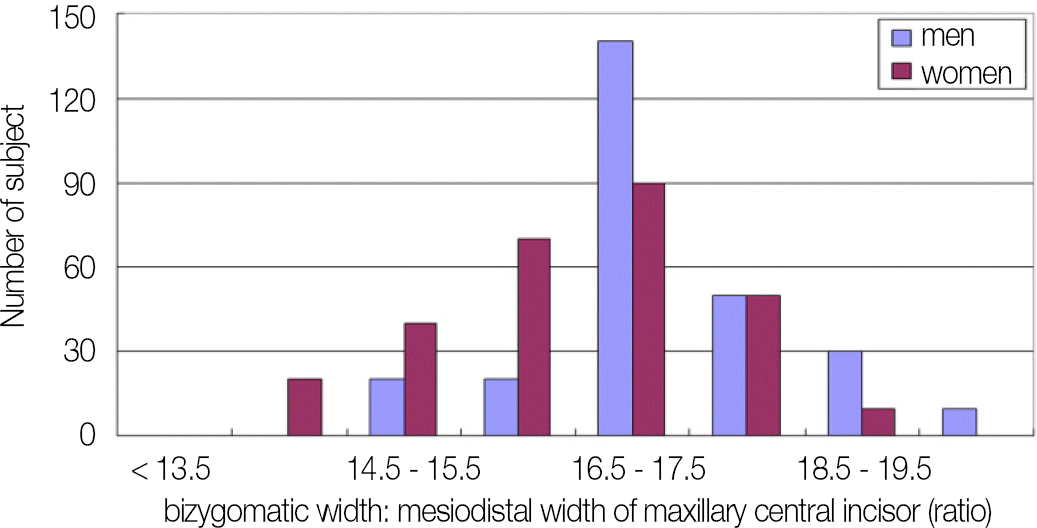
Fig. 5.
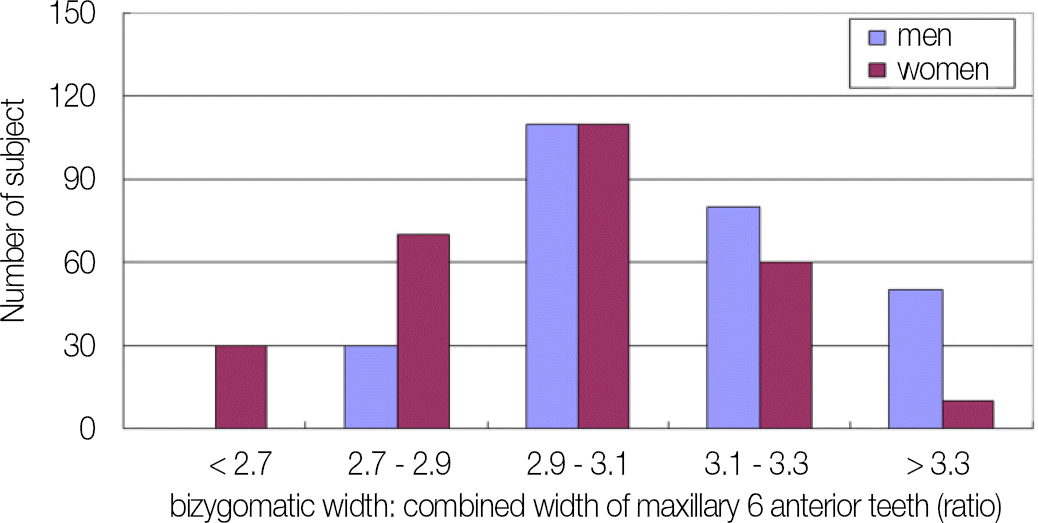
Fig. 6.
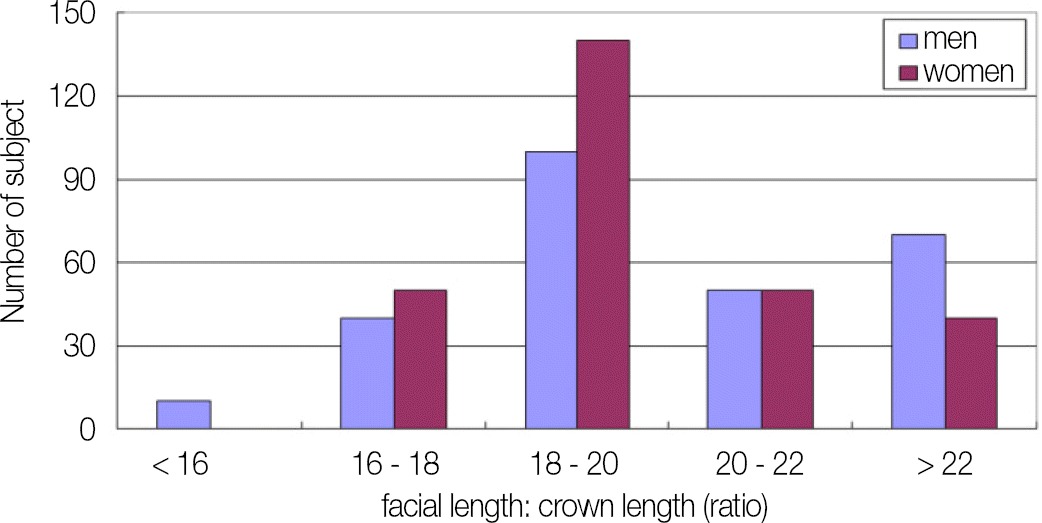
Table 1.
Table 2.
I1-W; mesiodistal width of maxillary central incisor, I2-W; mesiodistal width of maxillary lateral incisor, C-W; mesiodistal width of maxillary canine, I1-L; gingivoincisal length of maxillary central incisor, 4Inc; combined width of maxillary 4 anterior teeth, 6Ans; combined width of maxillary 6 anterior teeth, ICD (tip); intercanine distance from cusp tip to cusp tip, ICD (dcp); intercanine distance from distal contact to distal contact point, IP - LS I1; distance from the center of incisive papilla to labial surface of maxillary central incisor, IP - IC; perpendicular distance from the center of incisive papilla to intercanine line.
Table 3.
BZW; bizygomatic width, I1-W; mesiodistal width of maxillary central incisor, 4Inc; combined width of maxillary 4 anterior teeth, 6Ans; combined width of maxillary 6 anterior teeth, N - Gn; distance from nasion to gnathion, facial length, G - N: distance from glabella to nasion, Tr-Gn: distance from trichion to gnathion, I1-L; cervicogingival length of maxillary central incisor.
Table 4.
BZW; bizygomatic width, I1-W; mesiodistal width of maxillary central incisor, 4Inc; combined width of maxillary 4 anterior teeth, 6Ans; combined width of maxillary 6 anterior teeth, N - Gn; distance from nasion to gnathion, facial length, G - N: distance from glabella to nasion, Tr-Gn: distance from trichion to gnathion, I1-L; cervicogingival length of maxillary central incisor.




 PDF
PDF ePub
ePub Citation
Citation Print
Print


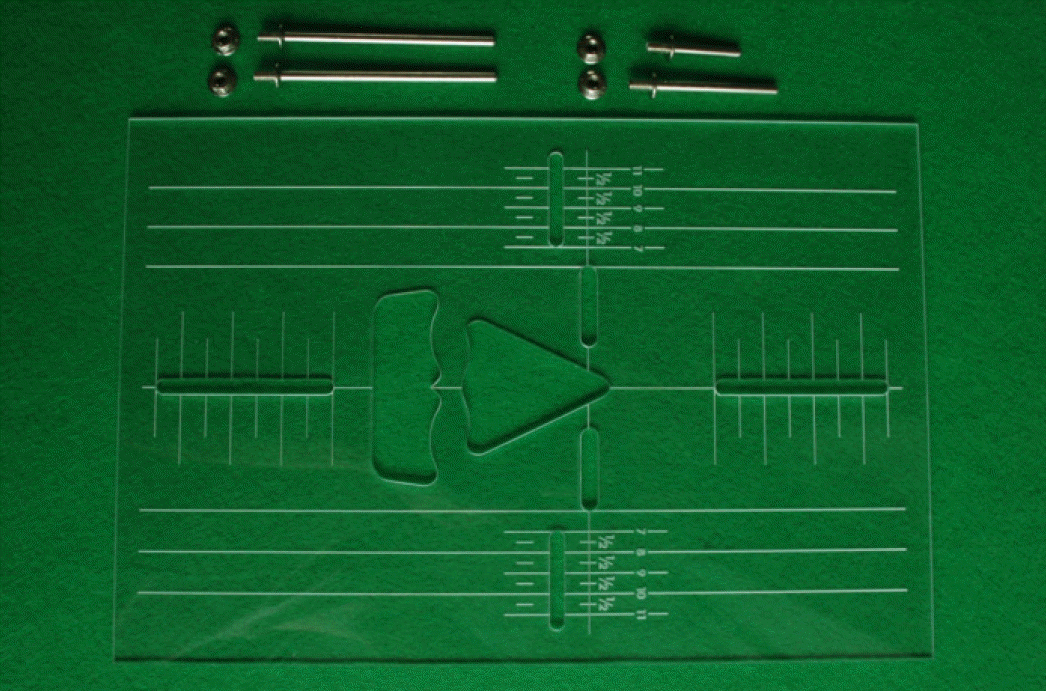
 XML Download
XML Download